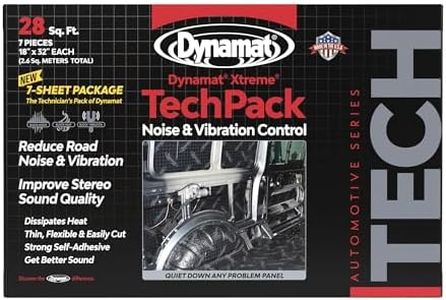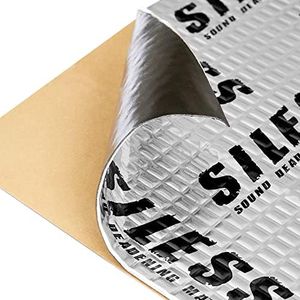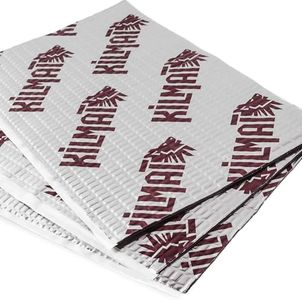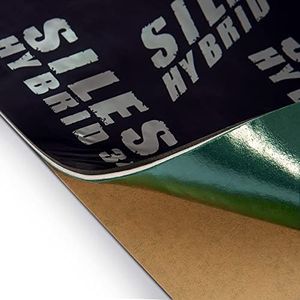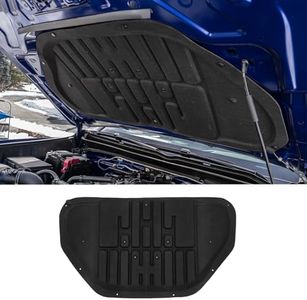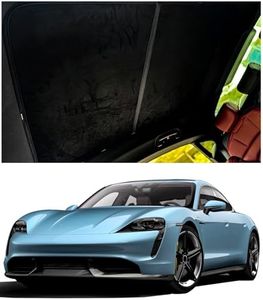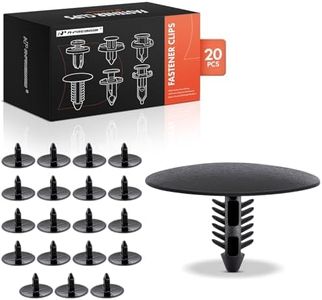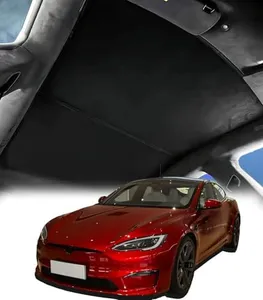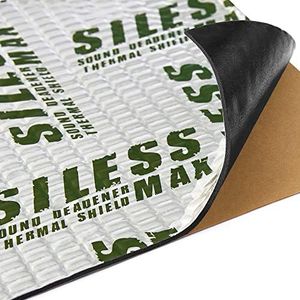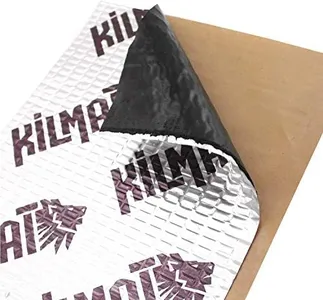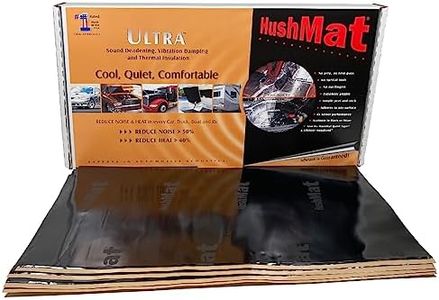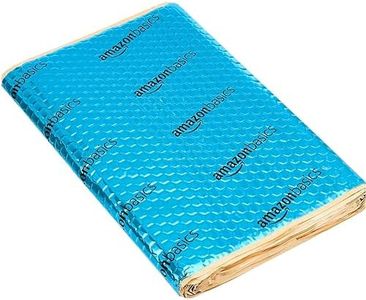10 Best Sound Deadening Kits 2025 in the United States
Our technology thoroughly searches through the online shopping world, reviewing hundreds of sites. We then process and analyze this information, updating in real-time to bring you the latest top-rated products. This way, you always get the best and most current options available.

Our Top Picks
Winner
Dynamat Xtreme Tech Pack Sound Deadening Car Insulation – Noise Dampening for Floor, Doors, Panels, Hood, Engine or Trunk – Easy Self Adhesive Install – Made in USA – 7 Sheets, 18”x32”, 28 sq ft total
Most important from
2806 reviews
The Dynamat Xtreme Tech Pack is a popular sound deadening solution designed mainly for cars, offering 28 square feet of coverage through seven flexible sheets measuring 18 by 32 inches each. Made from rubber, which is excellent for blocking noise, heat, and vibrations, it’s thin enough to fit in tight spaces like doors, floors, and engine hoods without adding bulk. Installation is straightforward thanks to its self-adhesive backing, making it a good choice even if you don’t have professional experience.
Users appreciate that it effectively reduces road noise and prevents speaker distortion, helping create a quieter, more comfortable ride. The product is also known for durability, with a design that handles heat well—important since car parts can get warm. The thickness is generally thinner than some heavier-duty kits, which might matter if you need maximum soundproofing in very noisy vehicles. The weight of the pack is somewhat high, so handling large areas might take some effort.
This sound deadening kit is a trusted, well-rated option that suits car enthusiasts and everyday drivers wanting a relatively easy-to-install, effective noise control solution.
Most important from
2806 reviews
Siless 80 mil (2mm) 36 sqft (3.4 sqm) Car Sound Deadening mat - Butyl Automotive Sound Deadener - Noise Insulation and Vibration Dampening Material (36 sqft)
Most important from
4666 reviews
The Siless 80 mil Car Sound Deadening mat offers a robust solution for those looking to reduce noise and vibrations in their vehicle. With a thickness of 80 mils (2mm) and a coverage area of 36 square feet, it provides substantial insulation, making it suitable for car enthusiasts and anyone wanting a quieter ride. The advanced formulation using Bmastic technology positions this product as a top contender in the sound-deadening market, promising efficiency without breaking the bank.
One of the standout features is its ease of installation. The peel-and-place method simplifies the process, eliminating the mess associated with spray-on adhesives. However, it’s important to note that while the installation instructions are clear, a roller is not included, which some users might need to purchase separately.
On the downside, while the product is marketed as cost-effective, buyers should be aware that achieving optimal results may require multiple packs, depending on the size and type of vehicle. Additionally, while the material is designed for automotive use, its effectiveness can vary based on installation techniques and the specific areas treated.
Most important from
4666 reviews
80 mil 10 sqft Car Sound Deadening Mat, Butyl Automotive Sound Deadener, Audio Noise Insulation and dampening
Most important from
15497 reviews
The KILMAT 80 mil Car Sound Deadening Mat is designed to reduce noise and vibrations inside your vehicle. Made from butyl with a foil layer, this material is sticky and easy to apply yourself, making it suitable for DIY projects. Its thickness of 80 mils is 1.5 times thicker than standard mats, which means it should block sound more effectively. You get 10 square feet of coverage per pack, enough for covering moderate areas like car doors or panels. The mat is lightweight considering its thickness, so it won’t add much weight to your vehicle.
A smart feature is the embossed foil surface that helps you know when you’ve installed it correctly — just roll it out smooth to ensure proper contact for best sound insulation. Many users rate it highly for effectiveness and ease of installation.
This mat is a solid choice for those seeking a reliable, easy-to-use sound deadening solution to improve car audio or reduce road noise.


